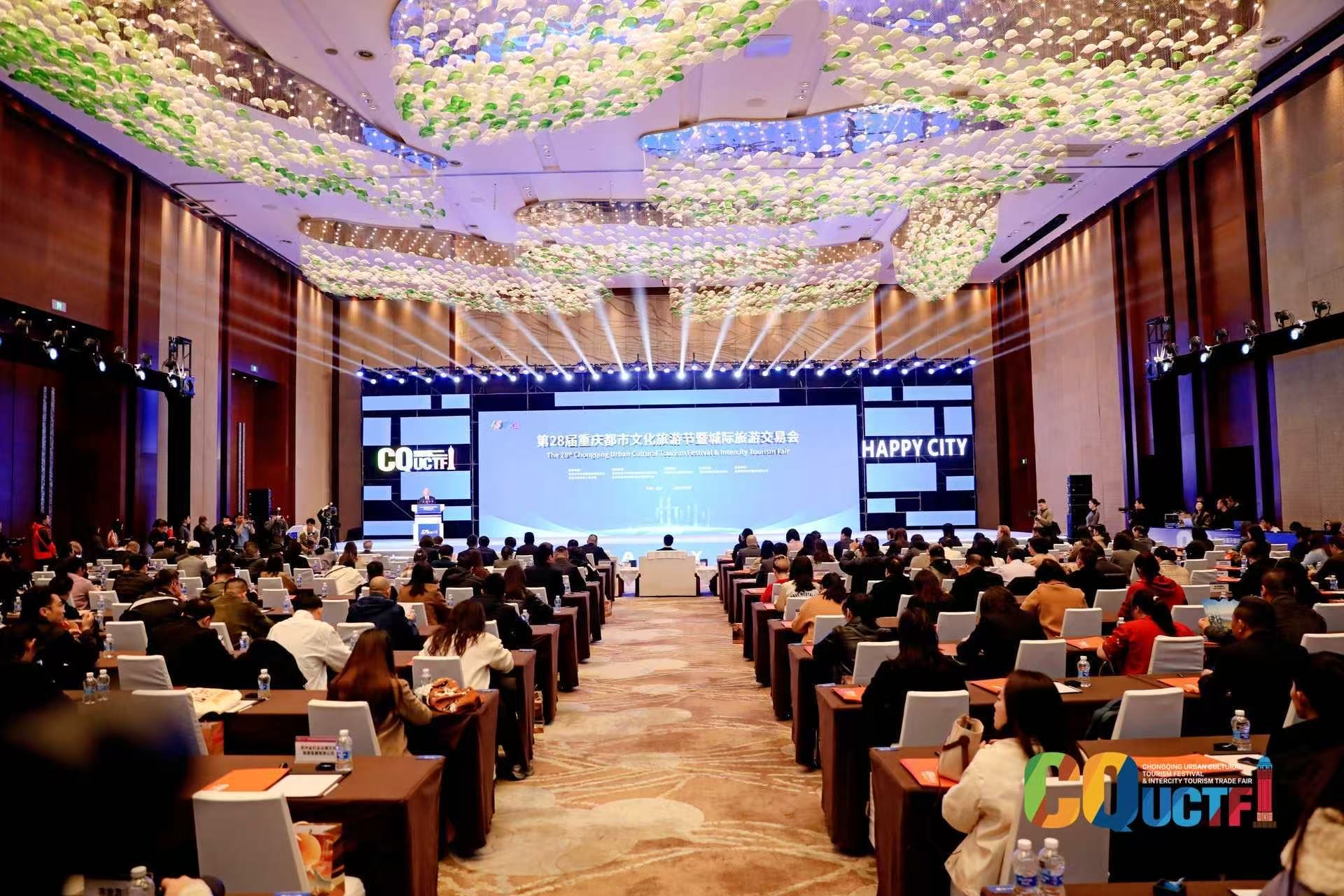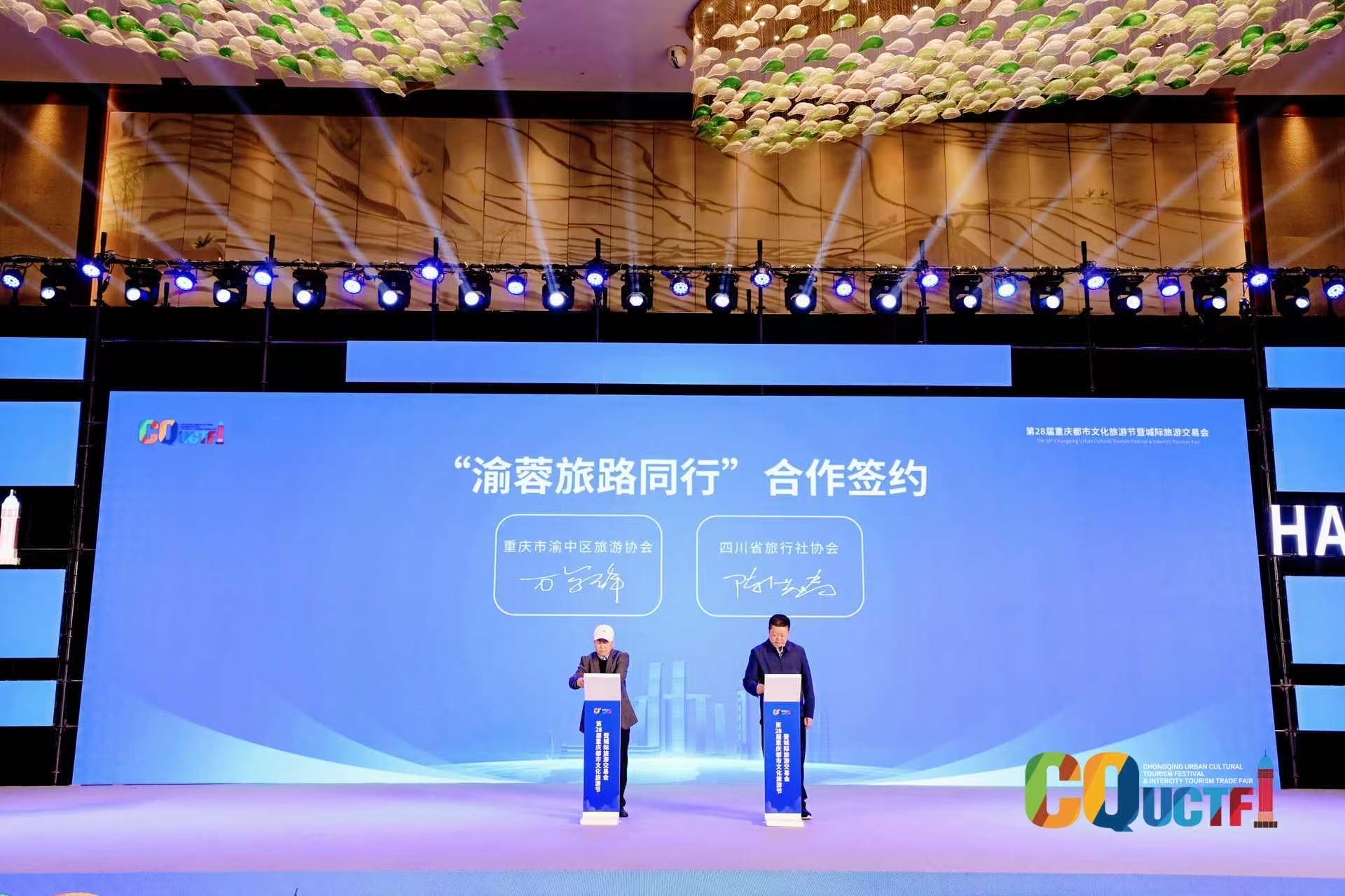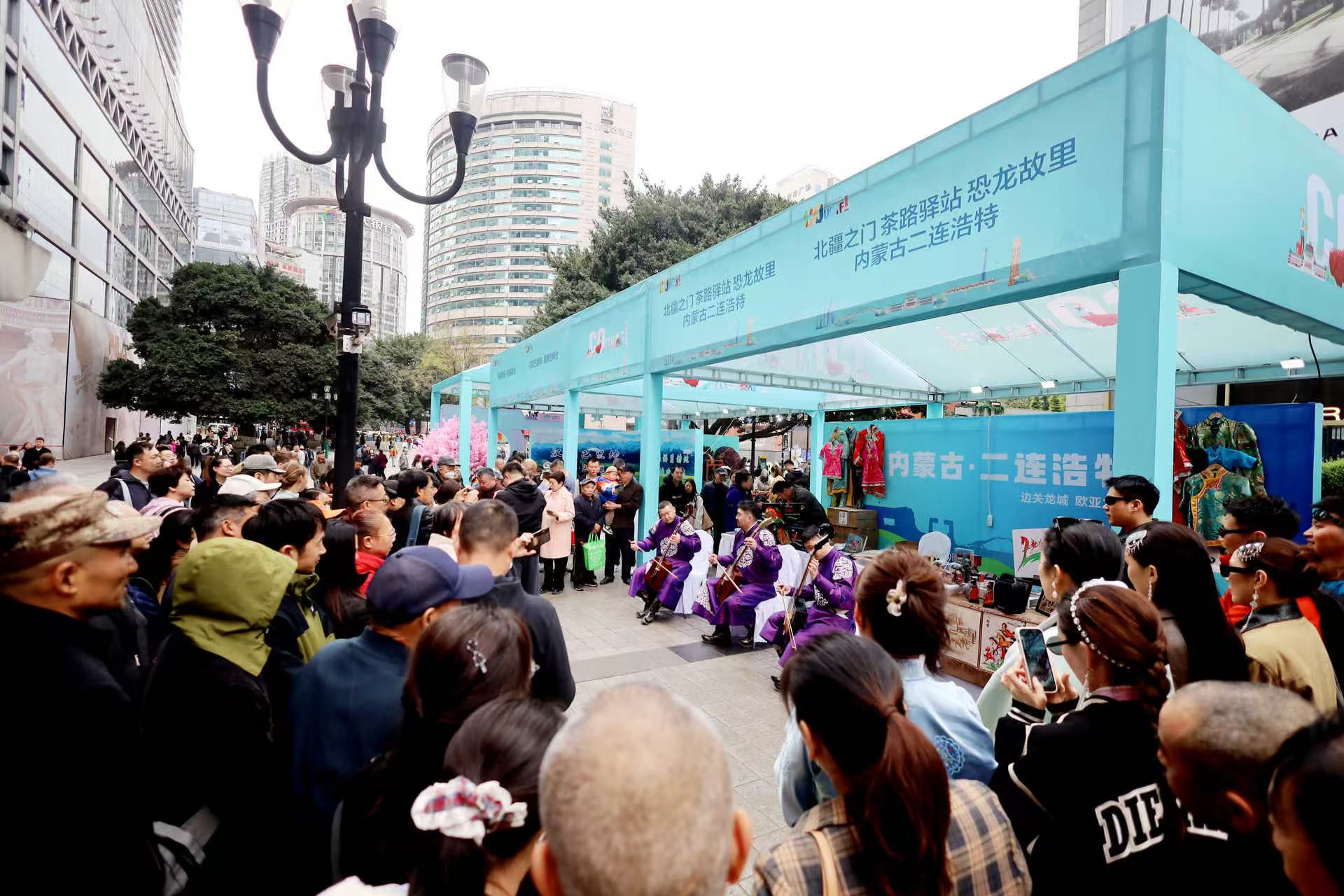 Bridging News
Bridging News
28th Chongqing Urban Cultural Tourism Festival & Intercity Tourism Fair Kicks Off
Chongqing—The 28th Chongqing Urban Cultural Tourism Festival and Intercity Tourism Fair officially opened on March 28 at Jiefangbei Pedestrian Street, bringing together a vibrant display of the city's cultural and tourism resources.

The 28th Chongqing Urban Cultural Tourism Festival & Intercity Tourism Fair opens this Friday, showcasing Chongqing's rich cultural and tourism offerings while promoting intercity travel cooperation. (Photo/The event organizer)
"We blend history, landscapes, and the local life, weaving them into the city's fabric. Every visitor who comes to Chongqing can experience the 'spring story' and feel the unique charm of this 'city of a thousand faces' that represents the spirit of Bashu," said Wang Dingguo, President of the Chongqing Cultural Tourism Association.
Running from March 28 to March 30, visitors are invited to Jiefangbei Pedestrian Street to experience a series of immersive displays showcasing the unique cultural and tourism offerings from various regions.
One of the key highlights of this year's event is the launch of new tourism routes to strengthen the Bashu (Sichuan-Chongqing) cultural tourism corridor. The newly introduced "Chongqing In, Chengdu Out" and "Chengdu In, Chongqing Out" luxury travel routes will allow residents and tourists to enjoy five unique themes exploring both regions' stunning landscapes and rich cultures.
Over 200 scenic spots and cultural enterprises gather
Wang Dingguo emphasized the growing significance of the event, noting that, after 27 editions, this fair has become one of the most influential and productive tourism events in western China. "This year, our theme, 'Happy City,' will explore four core areas: urban travel, cultural industry upgrades, cultural innovation, and business-tourism development coordination," said Wang.
He added that the event will serve as a platform for immersive cultural experiences and industry exchanges, offering a spectacular cultural tourism feast for both exhibitors and visitors alike.
International representation is also a key feature of this year's festival. Consular representatives and international business associations from 13 countries and regions, including Hungary, Myanmar, Laos, the Philippines, Japan, Italy, Korea, and Thailand, are in attendance to showcase their respective countries' cultural tourism offerings.
In addition, Sichuan, Hubei, Shaanxi, Guizhou, Shandong, Tibet, Xinjiang delegations, and more than 20 local districts in Chongqing showcase their tourism resources.
Travel routes linking Sichuan & Chongqing
As the integration of Sichuan and Chongqing's cultural and tourism sectors continues to deepen, this year's event introduces the "Chongqing In, Chengdu Out" and "Chengdu In, Chongqing Out" luxury travel routes, offering a rich array of cross-regional tourism experiences. These routes are designed to highlight the region's historical and modern aspects, including world heritage sites such as the Dazu Rock Carvings and Wulong Karst, and incorporating local traditions like the ancient Shu roads and Bashu mountain cultures.
In addition to these travel routes, the event sees the signing of a collaborative agreement between the Chongqing Yuzhong District Tourism Association and the Sichuan Travel Agency Association to jointly promote the region's tourism brands.

Chongqing Yuzhong District Tourism Association and the Sichuan Travel Agency Association signed a collaborative agreement to promote the region's tourism brands. (Photo/The event organizer)
Regional tourism alliance and special exhibits
The fair also welcomes the participation of the Southern Sichuan and Western Chongqing Cultural Tourism Integration Development Alliance, which features exhibitors from cities such as Zigong, Yibin, Luzhou, and Neijiang. The alliance's showcase highlights regional cultural and tourism resources, such as Sichuan's bamboo craftwork and tea culture, and Chongqing’s eco-tourism routes, including ancient town tours and black mountain valley explorations.

The 28th Chongqing Urban Cultural Tourism Festival and Intercity Tourism Fair officially opened on March 28 at Chongqing's Jiefangbei Pedestrian Street.
At the event, attendees can also immerse themselves in the diverse cultures of various provinces, with exhibits from Guizhou, Hubei, Inner Mongolia, Xinjiang, and more. Visitors will have the opportunity to explore fascinating intangible cultural heritage performances and regional folk arts.
 Related Stories
Related Stories